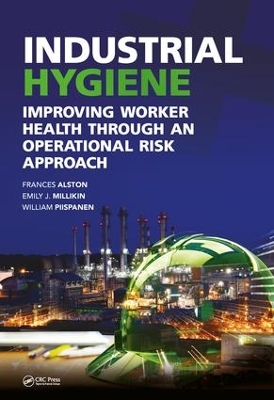Sustainable Improvements in Environment Safety and Health
3 total works
This book will address key organizational issues that must be considered and addressed when implementing Lean business practices. The book offers solutions for many of the challenges, provides a resource that leaders can use in addressing cultural and regulatory issues, provides means to address the associated people issues and the challenging task of knowledge retention and succession planning. Vignettes are used to illustrate and provide examples of potential issues and solutions that can be considered for resolving issues and a case study demonstrating ways to address the technical and people aspects of implementing Lean to ensure project success.
Strategic Environmental Performance
by Frances Alston and Brian K. Perkins
Protecting our environment has never been more important than it is today in the wake of climate change and the ever-increasing demand on natural resources due to the expanding world population. Environmental protection has been increasingly discussed by concerned citizen groups and politicians in the wake of unexpected environmental disasters that have occurred in recent years. The need to protect drinking water resources, control greenhouse gas emissions, and implement successful waste reduction practices will continue to gain visibility with growing social awareness. Environmental managers and leaders can all benefit from this comprehensive and strategic book which guides them through environmental regulatory requirements and methods that can be used to interpret the regulations, develop programs, and processes to ensure compliance. The book includes a Tool Kit containing resources that can assist a company in assessing and evaluating the strength of their environmental program, systems, and processes so that changes can be made before damages to the environment becomes a reality, and penalties are enforced.
Industrial Hygiene
by Frances Alston, Emily J. Millikin, and Willie Piispanen
Over the past forty years, the Industrial Hygiene profession has significantly grown, and is expected to continue to grow as workplaces evolve in the development, management, and usage of hazardous materials. This growth in the profession is also related to the shift in public knowledge and perception regarding the acceptance of the health risk from activities performed at work and home. As time progresses, workplaces are being regulated to not only minimize the health imparts to the workforce, but also decrease the likelihood of negatively impacting the environment. Society has become more educated on the potential impacts on human health and the environment that hazardous materials, activities, and environments can pose. As such, there has been a noticeable decrease in the acceptance of risk by workers and the public. The accepted standard of performance for Industrial Hygiene has grown beyond compliance, but now also focuses on improving existing processes and practices to create a workplace free from work related injury and illness.
Features:
- Shows application of risk mitigating techniques for industrial hygienists
- Explains the definition of risk and how it applies to health and safety management
- Defines the need for quality data management and continuous improvement in assessments
- Describes the role of the Industrial Hygienist and risk management when responding to emergencies
Industrial Hygiene: Improving Worker Health through an Operational Risk Approach focuses on the implementation of Industrial Hygiene, using a risk-based approach, in an operational environment. The approaches and methods described in this book are designed to assist the Industrial Hygienist in managing workplace risks, including risks associated with anticipation, recognition, evaluation, and hazard control processes.


